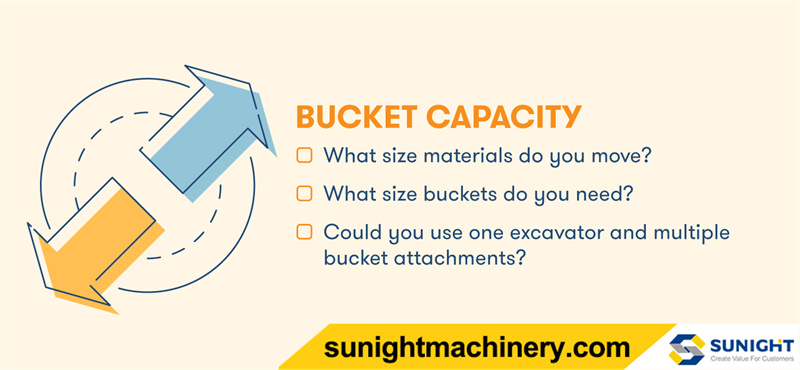Choosing the right equipment for a digging project can be a time-consuming task, especially since it’s so important to make the right choice. Even once you’ve decided on using an excavator, you still need to make sure you choose the right size. Pick one that’s too small or doesn’t have the right functionality and you won’t be able to get the job done properly. Choose one that’s too large and not only may it be the wrong fit for the job, but it could also push you over budget. So how do you decide what excavator size is right for you?
There are many different types of excavator, but they all fall into four main size categories: mini, midi, standard, and large. In order to pick the right excavator size, you need to know what your options are.
After you’ve secured a new job thanks to a successful bid, it’s time to make sure you’ve got all of the right equipment. One of the most common pieces of construction equipment that companies need to complete new work is an excavator. But with all the choices available, choosing the right excavator can be a tough ordeal.
Thankfully, this guide will help you learn how to choose an excavator that meets the needs specific to your job. Match your excavator to your job requirements, the work that needs to be done and the job site itself. Be sure to get all of the feature support you may need for future jobs.
It’s best to pick a smart partner who you trust to deliver the right equipment and supply you with any parts you need for repairs and improvements down the road. Your construction supply company should meet all of the criteria below and make you feel confident about your choice.
Your excavator needs to get the job done, and that’s the top criteria when choosing the right excavator. To make sure you’ve got enough power for your operation, look at the hydraulic systems and testing options for your next excavator. Many will list the power of their system and note what work can be performed during a full workday thanks to that power.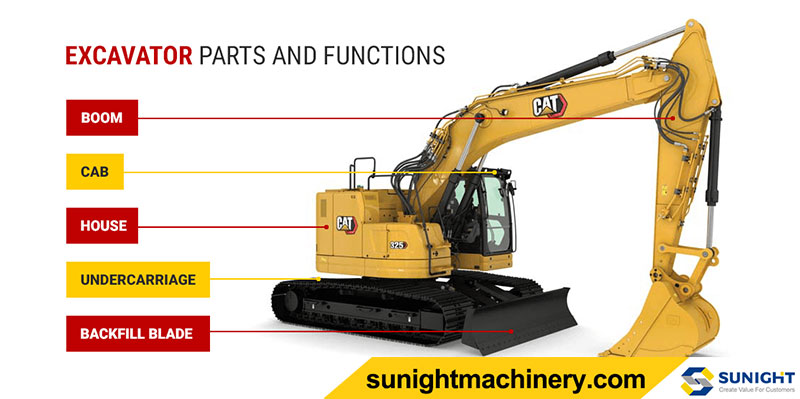
More powerful hydraulic systems allow for improvements in your efficiency and productivity because you’re matching the power you need, but performance also includes the best support for your job. Consider all of the jobs your excavator will need to perform when making your choice. Two major support options to consider are zero tail swing or zero house swing features for your excavator. These configurations allow your operator to work close to dig sites, walls and other obstacles in a safe manner. The zero-swing for the tail allows an excavator to move nimbly and reduces the likelihood of any accidental impact with a surrounding object, building or machine. During a turn, the zero-swing for housing helps prevent your operator from hitting the front and sides of the excavator when moving.
Zero-swing options are smart if you’re working in a space with a lot of obstacles on either side. However, this configuration means a wider excavator, and that isn’t always suitable for a worksite.
Almost all excavators have an advantage over the traditional backhoe: the boom is independent. This allows your operator to manage the machine and create a stable base that needs to be moved less. You’re getting better visibility and power with smoother operations.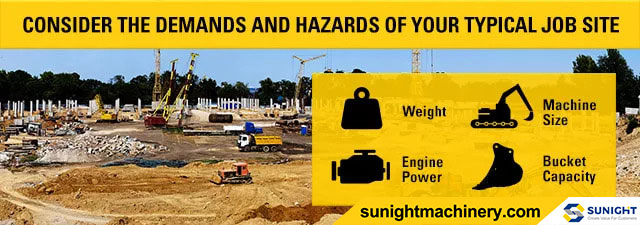
What does your job site look like? Picture it, including the hazards and your current needs, plus those you expect as your project moves through each phase. The best way to make sure you’re covered with your excavator purchase is to imagine all of your possible needs.
If you’re running a big operation or need equipment for the long haul, it’s best to judge the excavator based on your typical jobsite. Different models perform better on large, flat landscapes, compared to urban environments where there are many buildings and obstacles nearby.
After you consider your location, think about the jobs performed on your average site. The right excavator for your company must be able to perform your common reach, dig, lifting, carrying and other functions. Review past jobs and take proper measurements, such as loads or how deep your digs were.
While you’re thinking about your job standards and the common jobsite you work with, start the process of narrowing your search. Begin with reviewing the size and type of excavators. Remember that categories are general and specifications may differ by manufacturer, so get your mind set on a size —such as 5 tons —instead of a “mini.” Consider the following top types of excavators: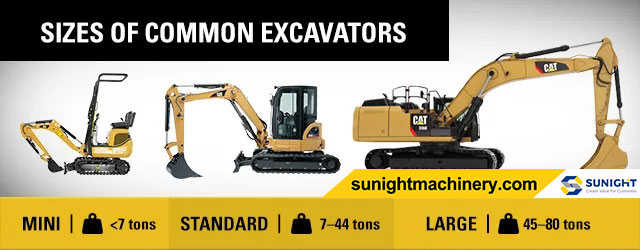
Mini or compact. These small excavators are typically the most mobile. They can weigh from as low as 2,100 pounds to just under 10 tons. A mini is a top choice for small jobs and those with tight space requirements, such as those that require the ability to maneuver around a building or work in areas with many lines running through the ground. These require the least amount of power, but they’ll also do the least amount of damage to the yard, road and sidewalk.
Standard. Excavators that are larger than 10 tons and below 45 tons fall into the standard designation. These are the most versatile excavators, working well in just about any space and with most types of jobs. They come with a lot of power, so it’ll be heavy and do a little damage to the land it has to cross. You’ll need plenty of space, but they’re strong and easy to transport. They’re common in the construction space.
Large. Excavators can reach up to 95 tons, and these behemoths fall into the large category. These machines are pure industrial workhorses. You won’t see them in urban environments or those with a lot of slopes around the work site, but they constantly provide power for major construction. These machines will require a significant investment in the equipment and trailer to move them to each job site. If you need this size and power, you’ll know it.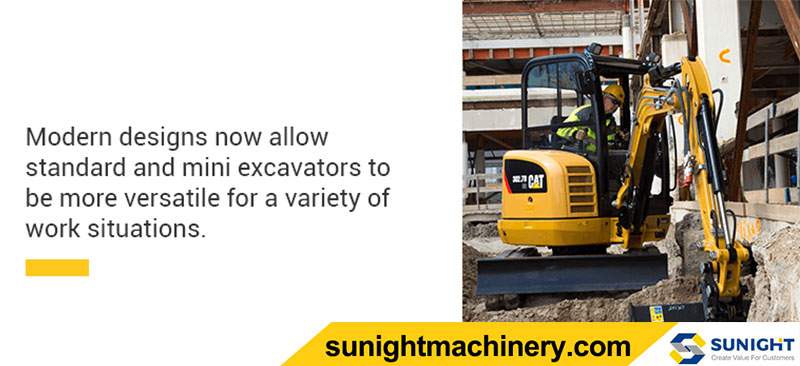
There are many different configurations available in each segment. Modern designs now allow standard and mini excavators to be more versatile for a variety of work situations. These include the options for the undercarriage to retract and let an excavator move through narrow areas such as fence gates, and then expand when they need a solid base to perform the work.
There are many different types of excavator, but they all fall into four main size categories: mini, midi, standard, and large. In order to pick the right excavator size, you need to know what your options are.
This is the smallest class of excavator and they are particularly useful for fitting into small spaces. Another benefit is that compact excavators are small enough to be hauled using Class 1 and 2 trucks, which in many states don’t require a Commercial Driver’s License (though it’s important to check with your local DMV first to make sure). This level of transportability makes them a favorite among people who are working in multiple locations. Mini excavators are great for indoor projects, sewer repairs, water line installations, and other projects that don’t require the size and power of a larger machine.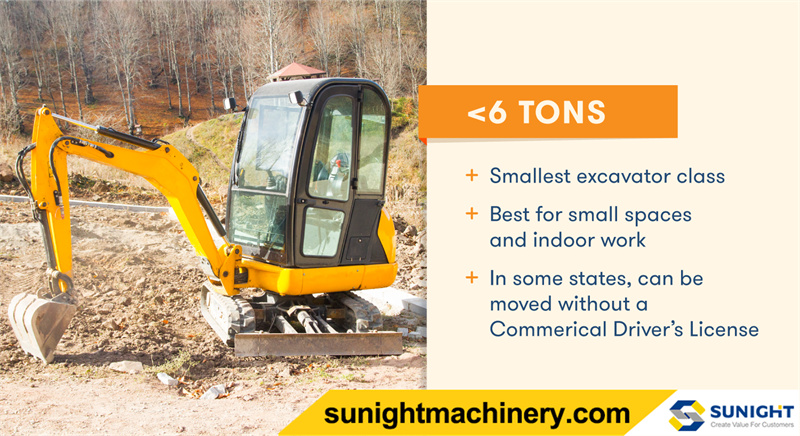
Midi or mid-sized excavators are a good choice for those who work in small spaces but need more reach and power than a mini excavator can provide. Midis can also be used on more standard projects like building construction and landscaping while still providing the advantage of increased maneuverability thanks to their smaller size.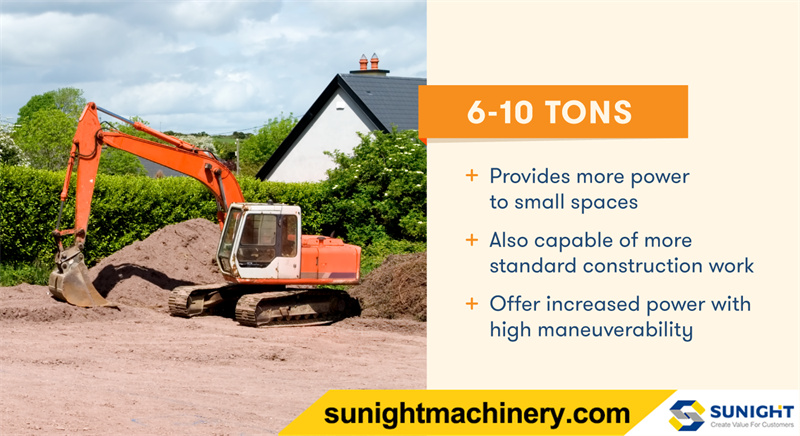
Standard or full-sized excavators, sometimes called “crawler” excavators, make up the largest volume of excavators on the market. The most popular crawlers fall in the 19–24 ton range, and this class is most common in commercial construction. Standard excavators not only offer more power and reach, but their hydraulic systems make them capable of handling multiple tool attachments.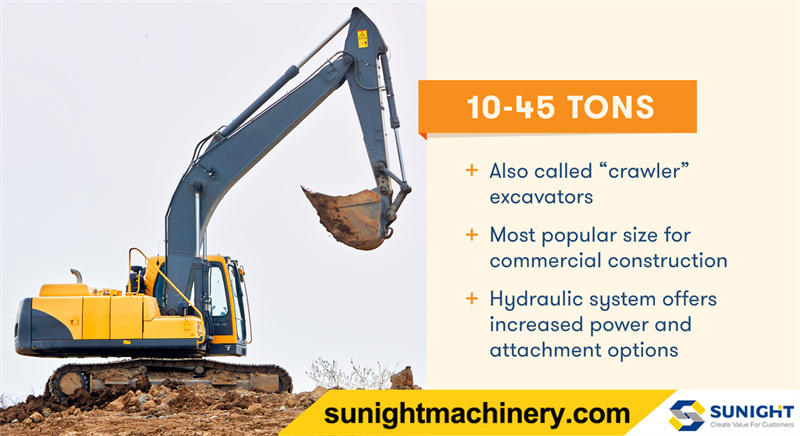
The largest class of excavators is useful for major construction and demolition projects that require the maximum of power and capacity. Though large excavators are unsurpassed for power, their size comes with major drawbacks — they require oversized trucks and trailers to move and are unwieldy when it comes time to store them.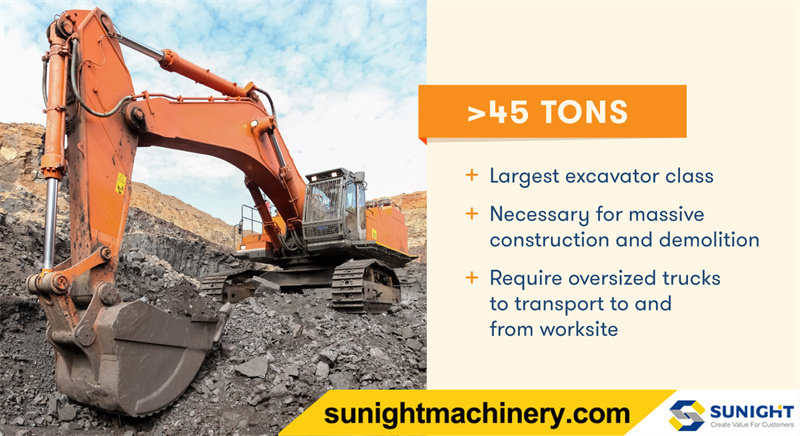
The best way to pick an excavator size is to evaluate your project’s needs in a variety of key categories. Here are the main things to consider when choosing an excavator:
It’s important to ensure the excavator you choose has the reach required to meet the depth of your project. If most of your projects fall into one depth category and you only occasionally have projects that require more reach, it may be worth purchasing the machine you use most and then renting a larger piece of equipment on a case-by-case basis.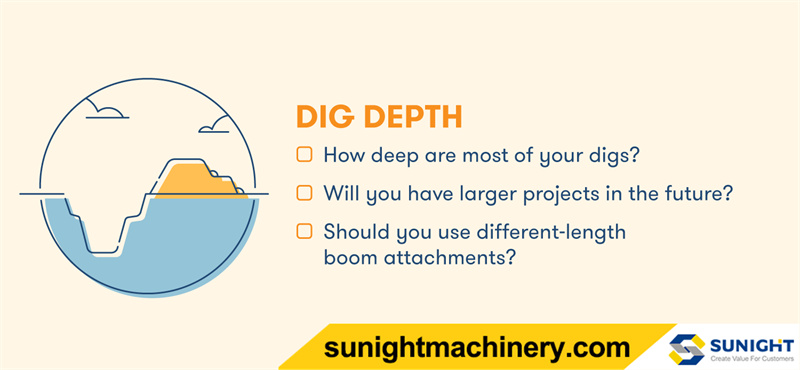
Larger excavators are capable of lifting bigger and heavier materials. For the heaviest lifts, standard and large excavators are powered by hydraulics.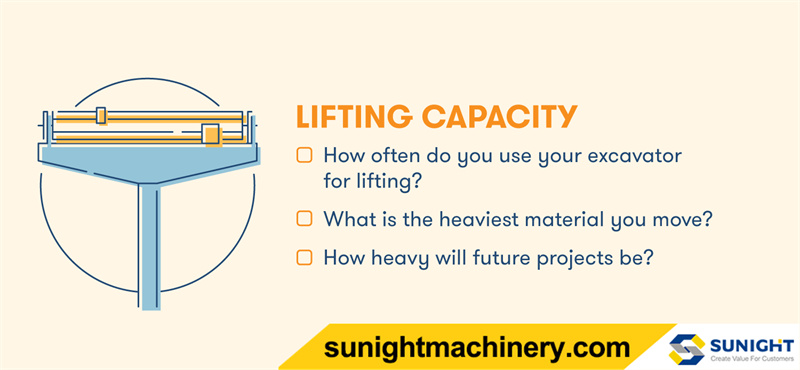
Larger excavators are more expensive, but choosing a piece of equipment that’s too small can be a costly mistake if you’re not able to complete your digs adequately. If you only use digging equipment sporadically, you may want to rent instead of buying an excavator to avoid maintenance and storage expenses.
Consider how tight the space around your worksite is. Are there permanent fixtures like fountains or sidewalks nearby? Is your worksite large or do you need to dig in multiple locations? If you require the power of a large excavator, do you have the capacity to store and transport it?
Lifting capacity has to do with more than just power — the excavator also needs adequate counterweight to anchor it against the strain of the lift. Make sure the machine you choose has a counterweight that matches the weight of your lift requirements.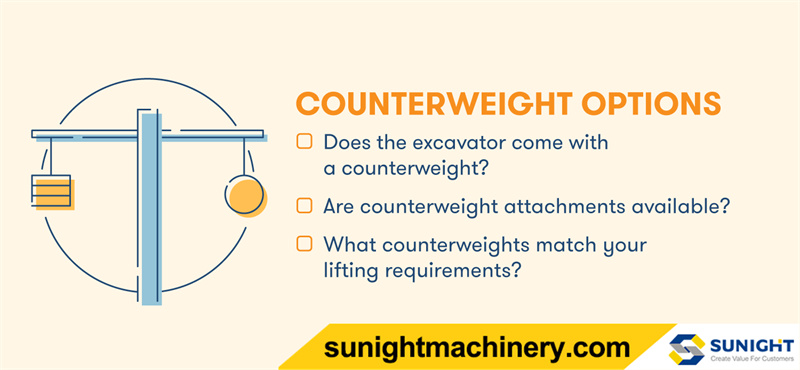
Excavator sizes are primarily determined by the overall size of the machine, but it’s also essential that the objects you lift fit in the excavator bucket.